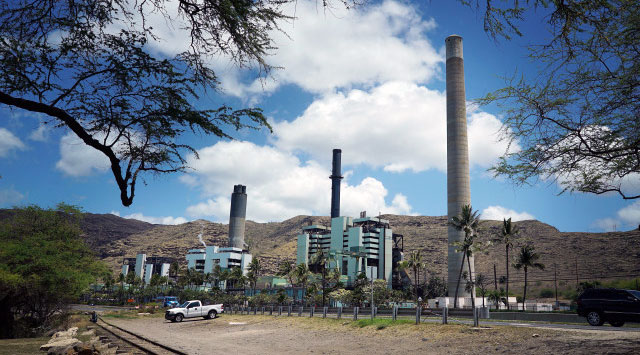March 29, 2022
By Mina Morita
Honolulu Civil Beat: Hawaii Needs Multipronged Approach To Achieve Clean Energy Goals
It could protect the islands from global oil price volatility as well as drastically decrease the state’s carbon footprint.
Brittany Lyte’s March 15 article — “Kauai Quit Using Oil to Produce Most of Its Electricity Years Ago. That’s Paying Off Now” — is well written and thoroughly researched, painting a picture of what is possible for our islands. Clearly, Kauai’s electric cooperative, Kauai Island Utility Cooperative, continues to lead the way for the rest of the state.
Although the article explains “Every island has a different energy puzzle,” there are common challenges to overcome and common strategies to deploy in structuring a template for success. However, what is not well understood by many is how complex it is to run a stable and resilient electric grid on intermittent renewables, such as wind and solar. In the article, two observations from former science reporter and KIUC director Jan TenBruggencate home in on the biggest obstacle — the lack of consistent renewable power that can be available when weather conditions or time of day curtail the power supply from intermittent resources — and biggest challenge, integrating the last 50% of renewables into the electrical grid.
What was done first was capturing all the low-hanging fruit. That was the easy part. Generally, throughout the state, it is still the fossil-fueled generators that are the backbone/workhorse of the electrical grid. They provide the big rotating engines that are necessary to provide inertia needed to help stabilize the electrical grid.
Batteries can help with voltage and frequency controls, but while short-term battery storage for solar and wind is price competitive, there are times when storm clouds blank out the sun for days at a time or the once reliable tradewinds are not as consistent due to climate change — both situations prevent effective and reliable charging of batteries with intermittents.
Four Advantages On Kauai
To facilitate its clean energy transformation, KIUC has four distinct advantages that gives it a head start that should not be overlooked. First, more than a decade ago KIUC installed smart meters systemwide, giving it greater visibility into real-time customer generation and electricity usage.
Second, KIUC has smaller, quick-start fossil generators, which are more fuel efficient, can work in tandem or individually and can start-up, ramp up or down faster to better match the fluctuations of intermittent renewable resources on the gird.
Third, through ingenuity, KIUC engineers have taken an existing fossil fuel plant and configured and upgraded the facility to run as a synchronous condenser, creating the spinning motors and inertia to regulate voltage. Instead of running on solely fossil fuels, the plant can run off of renewable resources, such as solar, hydroelectric and Kauai’s Green Team biomass plant.
And fourth, and most importantly, the leadership of past and present board members, the CEO and the management team, along with the ingenuity and can-do attitude of KIUC employees — all of whom completely understand the components necessary to achieve the big picture and meet multiple objectives — is the secret sauce that has made KIUC a model for other electric utilities.
While many still tend to focus on “sexy” technologies like solar and batteries and mantras like “no fossil fuels,” unless there are firm sources of power, that is, power plants that generate power continuously and have features to help control voltage and frequency, a narrow focus on intermittents can lead to grid instability and even blackouts. Until recently, only fossil fuel plants provided grid stability reliably. Now, there are firm renewable resources and technologies available that can replace fossil fuel plants, but these are limited to geothermal, hydroelectric and biomass. Of these, because geothermal and hydroelectric resources are geographically limited, only biomass can be developed throughout the state.
Honua Ola Bioenergy on Hawaii Island and the Green Team biomass on Kauai are examples of the kinds of firm renewable projects that could replace fossil fuel plants on the Big Island, Maui and Oahu. Unfortunately, on Oahu, the alternative in the near term is for Hawaiian Electric to increase its use of its inefficient fossil fuel plants to maintain grid stability.

Until recently, only fossil fuel plants provided grid stability reliably.
This course runs counter to the need to reduce and minimize the use of fossil fuel as quickly as possible to reduce cost impacts and address climate change. However, this is not the sole fault of Hawaiian Electric but the reluctance of some renewable advocates and policymakers to consider early on a more diverse portfolio of renewable resources and a complex, multipronged systemwide approach for a more robust electrical grid.
Hawaii’s clean energy transformation needs to be a whole system approach with near-, mid- and long-term strategies to meet three main objectives:
- protect us from oil price volatility in global markets which we cannot control
- drastically decrease the state’s carbon footprint and reduce the impacts of climate change, and our ultimate goal
- continue to provide safe, reliable and affordable electricity throughout Hawaii. These objectives are not mutually exclusive, as demonstrated by KIUC.
Honolulu Civil Beat, March 29, 2022: https://www.civilbeat.org/?p=1486634
